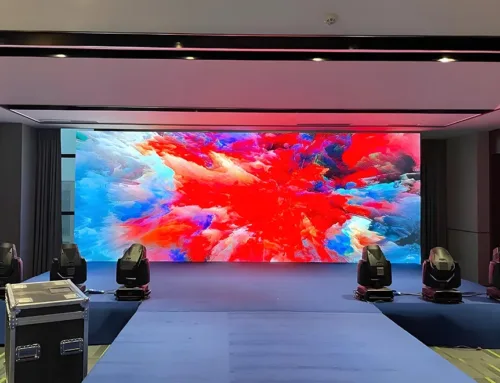In recent years, transparent LED displays have gained significant attention as a specialized segment within the broader display industry. Offering unique benefits such as being lightweight, thin, and highly transparent, these screens have seen rapid technological advancements. The variety of transparent LED screens available in the market today includes front-emitting, side-emitting, adhesive film, crystal film, holographic, photonic glass, and grid screens. Each type is designed with specific advantages and applications in mind, providing users with multiple options based on their needs. Understanding these features can help in selecting the right product for a given project or installation.
1. Adhesive Film LED Screens
Adhesive film LED screens represent a leap in display technology, offering a new way to integrate high-quality displays into glass structures. Unlike traditional LED displays, these screens use ultra-thin PCB boards embedded with bare LED chips. The result is a flexible, transparent screen that can be attached directly to glass surfaces without obstructing views or adding much weight. This makes them perfect for modern architectural designs where aesthetics and functionality meet.
- Remarkably Thin and Lightweight: With a thickness of just 1-3mm and a weight of around 3kg per square meter, adhesive film LED screens are some of the lightest in the market, making them easy to install even in delicate structures.
- High Transparency: Offering over 80% transparency, they provide an almost unobstructed view from both sides, ensuring that the displayed content looks clear and vibrant while the screen itself remains discreet.
- Flexible Installation: These screens can be fixed directly onto glass, suspended, or even curved and cut into various shapes, making them incredibly versatile for complex architectural needs.
2. Crystal Film LED Screens
Crystal film LED screens push transparency to a new level, with their surface so clear that they often become invisible when not in use. This type of display utilizes a special technology where LED chips are embedded directly into transparent film, making the screen both flexible and durable. The etched circuitry and vacuum-sealed components allow the screen to maintain a sleek, unobtrusive appearance.
- Ultralight Design: Weighing just 1.5kg per square meter and with a thickness of 1.5mm, crystal film LED screens can be easily applied to glass without compromising the structure or aesthetics of a building.
- Maximum Transparency: These screens boast over 90% transparency, providing a seamless visual experience without the interruptions of grids or frames.
- Perfect for Modern Architecture: The screens can be cut, bent, and shaped to fit the most innovative architectural designs. When turned off, they blend seamlessly into the background, allowing natural light to flow into the space.
3. Holographic Invisible LED Screens
A fusion of cutting-edge LED technology and optical design principles, holographic invisible screens are an advanced solution for creating stunning visual displays that seem to float in mid-air. With their high level of transparency and flexibility, these screens are ideal for futuristic and innovative applications, from luxury retail displays to high-tech corporate environments.
- Superior Transparency: By using hollowed-out PCB boards, these screens reach transparency levels of over 90%, offering a near-invisible appearance.
- Light and Thin: Weighing just 2kg per square meter and less than 2mm thick, these screens are lightweight and blend effortlessly into any environment.
- Flexible and Adaptable: They can be bent and shaped into different forms, providing designers with the freedom to create displays that fit any space or design concept.
4. Conventional Transparent LED Screens
Traditional transparent LED screens are constructed using a modular system of light strips, which makes them ideal for large-scale installations. These screens can be expanded indefinitely to cover large areas, providing a dynamic and visually engaging experience. While they offer slightly less transparency compared to the other types, they are still highly effective in many settings.
- Unlimited Expansion: The modular nature of these screens allows them to be extended endlessly, making them suitable for massive installations in commercial centers, exhibition halls, or stadiums.
- Best for Viewing from a Distance: While these screens work well in large spaces, their pixel density may not be ideal for close-up viewing.
- Easy to Install: With a simple structure and lightweight components, these screens can be quickly assembled and installed, offering a cost-effective solution for large projects.
By understanding the different types of transparent LED displays available, businesses and designers can make more informed decisions when choosing the right screen for their project. Whether the goal is to create a striking visual effect on a building’s glass facade or to implement high-tech solutions for interior spaces, transparent LED screens offer a versatile and forward-thinking solution that combines aesthetics with functionality.

